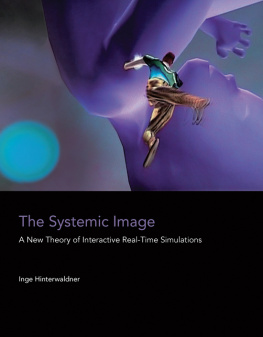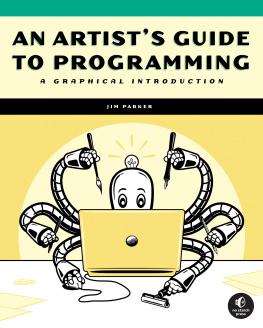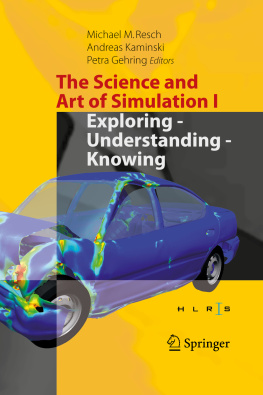The Systemic Image
A New Theory of Interactive Real-Time Simulations
Inge Hinterwaldner
Translated by Elizabeth Tucker
The MIT Press
Cambridge, Massachusetts
London, England
2010 Wilhelm Fink Verlag, Paderborn
All rights reserved by and controlled through Wilhelm Fink GmbH & Co. Verlags-KG, Paderborn.
The translation of this work was funded by Geisteswissenschaften InternationalTranslation Funding for Humanities and Social Sciences from Germanya joint initiative of the Fritz Thyssen Foundation, the German Federal Foreign Office, the collecting society VG WORT and the Brsenverein des Deutschen Buchhandels (German Publishers and Booksellers Association).
This edition 2017 Massachusetts Institute of Technology
All rights reserved. No part of this book may be reproduced in any form by any electronic or mechanical means (including photocopying, recording, or information storage and retrieval) without permission in writing from the publisher.
Every effort has been made to contact the copyright holders of the images in this book. Please address any queries to the author, care of The MIT Press.
This book was set in Stone Sans and Stone Serif by Toppan Best-set Premedia Limited. Printed and bound in the United States of America.
Library of Congress Cataloging-in-Publication Data
Names: Hinterwaldner, Inge, author. | Translation of: Hinterwaldner, Inge.
Systemische Bild.
Title: The systemic image : a new theory of interactive real-time simulations
/ Inge Hinterwaldner.
Other titles: Systemische Bild. English
Description: Cambridge, MA : The MIT Press, 2017. | Includes bibliographical
references and index.
Identifiers: LCCN 2016016809 | ISBN 9780262035040 (hardcover : alk. paper)
eISBN 9780262335553
Subjects: LCSH: Art--Computer simulation. | Science--Computer simulation. |
Visualization. | Interactive multimedia. | Simulation methods. | Art and
technology.
Classification: LCC N72.T4 H5613 2017 | DDC 700/.41--dc23 LC record available at https://lccn.loc.gov/2016016809
ePub Version 1.0
d_r0
Acknowledgments
The manuscript for this book was submitted as a doctoral dissertation to the University of Basel in 2008, was defended in 2009, and in 2010 received the Prize for the Humanities awarded by the Faculty of the Humanities, University of Basel (for the best PhD thesis of the academic year 2009/2010). The German version of the text was also published in 2010 by Wilhelm Fink Verlag, Paderborn.
For placing their faith in me and granting me their interest, for the equally inspiring and intensive mentoring of this work, I thank my dissertation advisors, Gottfried Boehm (University of Basel) and Michael Hagner (ETH Zurich). I profited from stimulating research environments from 2000 to 2006 at the Karlsruhe University of Arts and Designs graduate college Image. Body. Medium. An Anthropological Perspective (led by Hans Belting and Beat Wyss), as well as from 2005 to 2008 at the graduate college Image and Knowledge (under the direction of Gottfried Boehm and Ludger Schwarte) within the National Centre for Competence in Research program, Iconic Criticism: The Power and Meaning of Images at the University of Basel. Thanks go to all who made this possible for meto the financing institutions (the German Research Foundation and the Swiss National Science Foundation), as well as, not least, to the colleagues with whom I worked and tested out ideas. I give particular thanks to Hans H. Diebner for countless discussions, tips, and his support. My brother Rudi F. Hinterwaldner was ready to help at any time with all of my possible, and impossible, technical requests. Many people took me further in my research with suggestions on matters of content. I can list only a few of them here: Claudia Blmle, Beate Fricke, Frank Furtwngler, Marion Gartenmeister, Annamira Jochim, Tanja Klemm, Tabea Lurk, Bernd Mahr, Stphane Montavon, Samantha Schramm, Sandro Schnborn, Barbara van der Meulen, Hans-Christian von Herrmann, and Mirjam Wittmann. I do not want to forget all the researchers and artists whom I had the opportunity to visit and interview, as well as the museums and exhibition spaces that allowed me to conduct my studies on their materials and make documentation, even beyond general opening hours. The Swiss National Science Foundation, the German Research Foundation, and the Max Geldner Foundation enabled my research through their financial contributions.
Lev Manovich encouraged and supported me in preparing the English edition. The translation by Elizabeth Tucker, whom I thank for her brilliant accomplishment and an ideal collaboration, was made possible through the Geisteswissenschaften International Prize. This special recognition is part of Geisteswissenschaften Internationals award to support the translation of academic books, granted by the German Publishers & Booksellers Association, Fritz Thyssen Foundation, VG Wort, and the German Federal Foreign Office. Thanks to Wilhelm Fink Verlag, and especially to Alexandra Schmidt, for their accommodation with the English publication rights. The publication of the translation was generously supported by the Swiss National Science Foundation through the National Centre for Competency in Research program,Iconic Criticism, specifically Ralph Ubl and Orlando Budelacci, as well as by the Freiwillige Akademische Gesellschaft Basel.
At MIT Press, I am deeply grateful to my editor Doug Sery for accepting the book manuscript for translation and to Gita Manaktala for her continuing support in moving the publication forward. I was also fortunate to work with Susan Buckley who prepared the manuscript for editing and cleared the picture rights. Thanks go as well to Marcy Ross who made sure the publication took shape by finalizing the text and to Yasuyo Iguchi who designed the cover and paid careful attention to the books layout. They earn my wholehearted acknowledgment as they all contributed substantially to the success of the outcome.
Inge Hinterwaldner, June 2016
Introduction
While often postulating a reference to reality through their unique position between test environment and explicit design, computer simulations currently serve scientific knowledge, education, training, therapy, and recreation. It does not look as though they will lose significance in the near future. Their great merit lies in being able to represent objects and situations in their changes and progressions. For this purpose, the entity to be simulated is conceived or defined in some number of functional characteristics deemed to be essential. This group of ascribed features determines the radius of action, the sensitivity to external influences, and, via the temporal components, the outward manifestation. These framing conditions are expressed in a mathematical model that organizes the relationships between parts of a complex into a structurea systemic architecture. The model in turn is integrated into a source code and, finally, executed with the help of a computer. The execution of the mathematical model is referred to as dynamic simulation.
The Object of Study
This book takes dynamic computer simulations as the object of study. Although the process by which simulations are produced is also taken into view and considered as central, the foreground is devoted not to mathematical and technical components as explored in computer science or computational visualistics, but rather to the sensory aspects of the realization, so it is sufficient here to understand the basic concepts that underlie the algorithms. These are extensively discussed and developed in more strongly technical and application-oriented disciplines. The focus of our interest here lies in the aspects of simulations that can be experienced by the senses: in the optic, acoustic, haptic/tactile, or, more broadly, sensory-motor (but rarely olfactory) impressions that simulations offer. Iconicity for the most part plays a dominant role.









